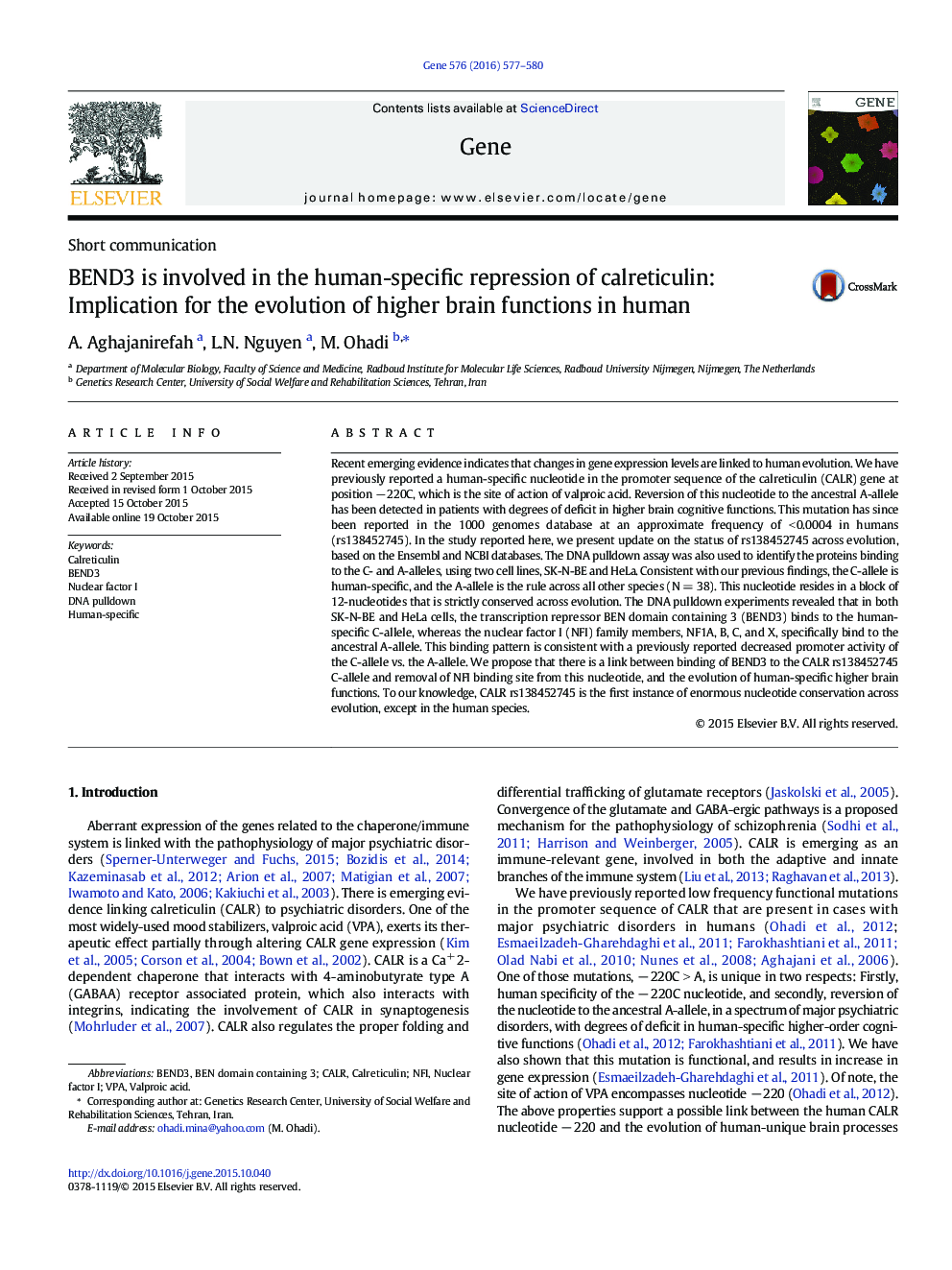| کد مقاله | کد نشریه | سال انتشار | مقاله انگلیسی | نسخه تمام متن |
|---|---|---|---|---|
| 5905223 | 1159857 | 2016 | 4 صفحه PDF | دانلود رایگان |

- Enormous nucleotide conservation at CALR promoter rs138452745 across evolution, except in the human species.
- BEND3 binds to the rs138452745 human-specific C-allele.
- NF1A, B, C, and X bind to the rs138452745 ancestral A-allele.
- Binding of BEND3 and removal of NFI binding to the rs138452745 C-allele may be linked with human-specific brain functions.
Recent emerging evidence indicates that changes in gene expression levels are linked to human evolution. We have previously reported a human-specific nucleotide in the promoter sequence of the calreticulin (CALR) gene at position â 220C, which is the site of action of valproic acid. Reversion of this nucleotide to the ancestral A-allele has been detected in patients with degrees of deficit in higher brain cognitive functions. This mutation has since been reported in the 1000 genomes database at an approximate frequency of < 0.0004 in humans (rs138452745). In the study reported here, we present update on the status of rs138452745 across evolution, based on the Ensembl and NCBI databases. The DNA pulldown assay was also used to identify the proteins binding to the C- and A-alleles, using two cell lines, SK-N-BE and HeLa. Consistent with our previous findings, the C-allele is human-specific, and the A-allele is the rule across all other species (N = 38). This nucleotide resides in a block of 12-nucleotides that is strictly conserved across evolution. The DNA pulldown experiments revealed that in both SK-N-BE and HeLa cells, the transcription repressor BEN domain containing 3 (BEND3) binds to the human-specific C-allele, whereas the nuclear factor I (NFI) family members, NF1A, B, C, and X, specifically bind to the ancestral A-allele. This binding pattern is consistent with a previously reported decreased promoter activity of the C-allele vs. the A-allele. We propose that there is a link between binding of BEND3 to the CALR rs138452745 C-allele and removal of NFI binding site from this nucleotide, and the evolution of human-specific higher brain functions. To our knowledge, CALR rs138452745 is the first instance of enormous nucleotide conservation across evolution, except in the human species.
Journal: Gene - Volume 576, Issue 1, Part 3, 15 January 2016, Pages 577-580